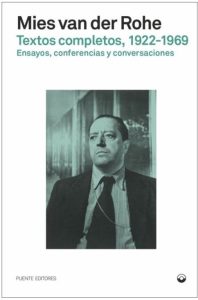Abstract
Social housing—serialized, minimal, and rational—is for sure the field in which the architecture of the Modern Movement made its most radical and innovative contributions, giving rise to a more specific corpus of research that remains a fundamental benchmark in housing design. Although international organizations like ICOMOS and DOCOMOMO have stressed the importance of safeguarding iconic constructions and bannered them as vital pieces of the architectural and urban memory of the city, only a small part of 20th century European social housing is guaranteed preservation by legal protection. The need to protect and preserve this heritage is questioned to this day, remaining far from being unanimously accepted by society, administrations, other agents involved, and even a portion of the collective of architects. As a consequence, many of these constructions have become functionally and physically obsolete in recent years. Combined with a stigmatized public image, this causes profound transformations in them—beyond the control of their users—which affect their original conceptions and appearances or altogether lead to their demolition and eventual replacement by a conventional residential fabric. Of all the new challenges posed in the matter of restoring and conserving modern architecture, it is perhaps social housing that presents the most fragile, complex, and contradictory type on which to work out a convincing link between original urban and architectural values on one hand, and the demands of contemporary living on the other. It is precisely in this difficult node that we can discern a strategic sector for exploring and generating knowledge specific to the housing project. Faced with the paradoxical house-heritage binomial, we propose transformation as motor in interventions intended to recontextualize constructions, in the belief that it enables the main poles of the binomial —permanent/temporary, universal/generic, extraordinary/ordinary, one-off/repetitive, public/private, etc.— to combine and activate one another. This premise supports the hypothesis of a concept of heritage that allows for evolution, and that therefore rejects the idea of preservation as mere protection of images frozen in time, detached from social interests and the structures around which relationships play out in the present moment. Hence the idea of breaking with the two extreme positions, which tend to bring about a movement toward modern architecture, which in turn is either regarded with blind, even acritical enthusiasm, or, on the contrary, condemned with indifference and disdain. In the face of these two opposed poles, a third way proposes to examine the residential heritage of modernity through the prism of contemporary thought, learning from it and building on its intrinsic values instead of eliminating it or covering up its defects. This thesis thus concentrates on three paradigmatic elements of modern research that have unavoidable consequences for the contemporary city: the continuous green mat at the foot of the buildings, the elevated street, and the minimal cell. In them, values of the past interweave with yearnings of the present, but also with the main problems that arise in those constructions, over time, in three successive scales. Behind them lies an opportunity for the contemporary architect which this thesis embraces, in the conviction that therein can be found the solution to the problem, the key to the transformation project. The ultimate intention is to demonstrate the importance of engaging in active dialogue with the three essential elements of modern social housing, and of maintaining their physical presence in the contemporary city, given that they make the urban and social fabric all the more rich and diverse. Certainly, many of the specific building works studied here cannot be literally extrapolated to all modern social housing developments, but to a large extent, the discourse leading to them can. The principal objective is to identify and define the conflicts and opportunities to be found in the practice of carrying out interventions on that young and extraordinary inhabited heritage that modern social housing is. With this objective in mind, the choice of study cases comes from the tradition of the modern social project, and from the interest in it that Madrid shares with the cities of the Randstad; an interest taken with a view to learning something, from our perch in Spain, from the long road already traveled by the Dutch in the matter of restoring and adapting the modern residential heritage. All the projects analyzed— from Kiefhoek in Rotterdam to Bijlmermeer in Amsterdam, passing through the poblado dirigido of Entrevías and the U.V.A of Hortaleza in Madrid—prove to be key testimonies to the modern research that has been conducted in the area of affordable housing; a line of research still considered open.
Access the thesis





